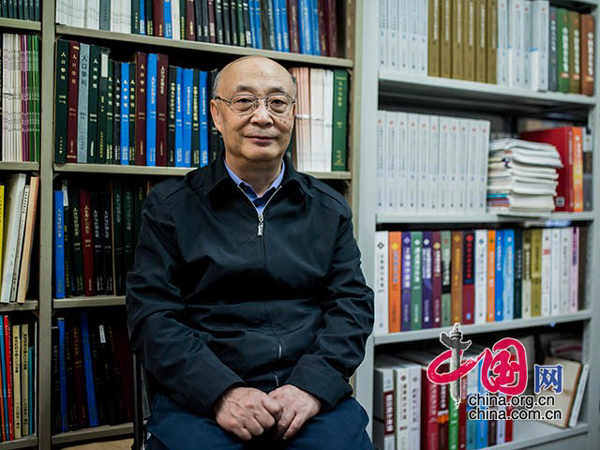China’s population is expected to reach 1.42 billion by 2020, while the birth gender ratio is expected to be reduced to 112 boys for every 100 girls, according to a population development plan for the 13th Five-Year Plan (2016-20) recently released by the National Health and Family Planning Commission (NFHPC).
|
|
|
Zhai Zhenwu, vice chairman of China Population Association and professor of sociology and population studies at Renmin University of China. [Photo by Zheng Liang/China.org.cn] |
In a wide-ranging interview with China.org.cn to coincide with the report’s release, Zhai Zhenwu, vice chairman of China Population Association and professor of sociology and population studies at Beijing’s Renmin University of China, discussed the population development planning.
Imbalanced sex ratio at birth since 1985
Prof. Zhai said gender imbalance has become a very acute issue in China with a far-reaching impact on the country’s population structure and social-economic development.
He cited some statistics from the development plan. “Before 1985, the birth gender ratio was 106 or 107 boys for every 100 girls, which was still a normally-accepted gap. However, the number kept growing year-by-year, and in 2000 it reached 120 boys for every 100 girls; in some provinces it was even up to 135 to100.”
Such a big imbalance is rarely seen in the world in terms of degree, duration and scope, he stressed. “The issue has aroused great concern throughout society, and some media have continuously reported that millions of men are facing a ‘bachelor crisis,'” he said.
Thanks to great efforts by all sides, the ratio declined to 113 boys to 100 girls in 2016, the lowest in decades, Professor Zhai added.
Main reasons for imbalance
The professor identified three main reasons for the gender imbalance.
The first is a traditional social attitude that regards men as superior to women, which prevails especially in rural areas like those in Guangdong and Fujian provinces in southern China. This reflects the financial reality that a son will take care of his ageing parents, while a daughter will normally marry and be lost to the family in this regard.
Even though people’s living standards have greatly improved, their deep-rooted attitude in this regard has not changed accordingly.
The second reason is sex-selective abortion, which has made the situation worse. Despite a ban on pre-natal sex tests and gender-based abortions, both have seen a steady rise in some areas since ultrasound technology was introduced. Early sex-selective abortions were performed in many rural hospitals, where pregnant women asked doctors to help identify the sex of the fetus and induce an abortion if it was a girl.
The third reason is an overall decline in the country’s birth rate. This is related to the state family planning policy implemented for nearly four decades known as the “one-child policy.”
Follow this news feed: East Asia






